Protective sea walls recently installed in East Boston already have tenants | Boston Globe
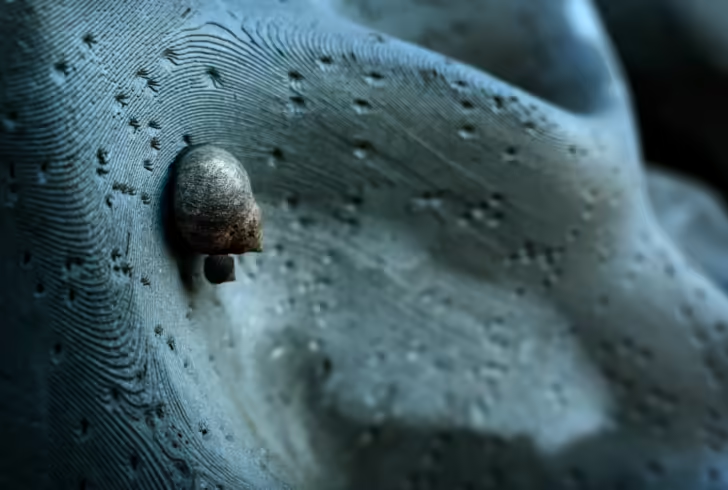

The Lab’s pilot Living Seawalls project, Managing Director Joe Christo, and UMass Boston researcher Jarrett Byrnes are featured by the Boston Globe, highlighting the site in East Boston and some of the residents already calling the spot home.
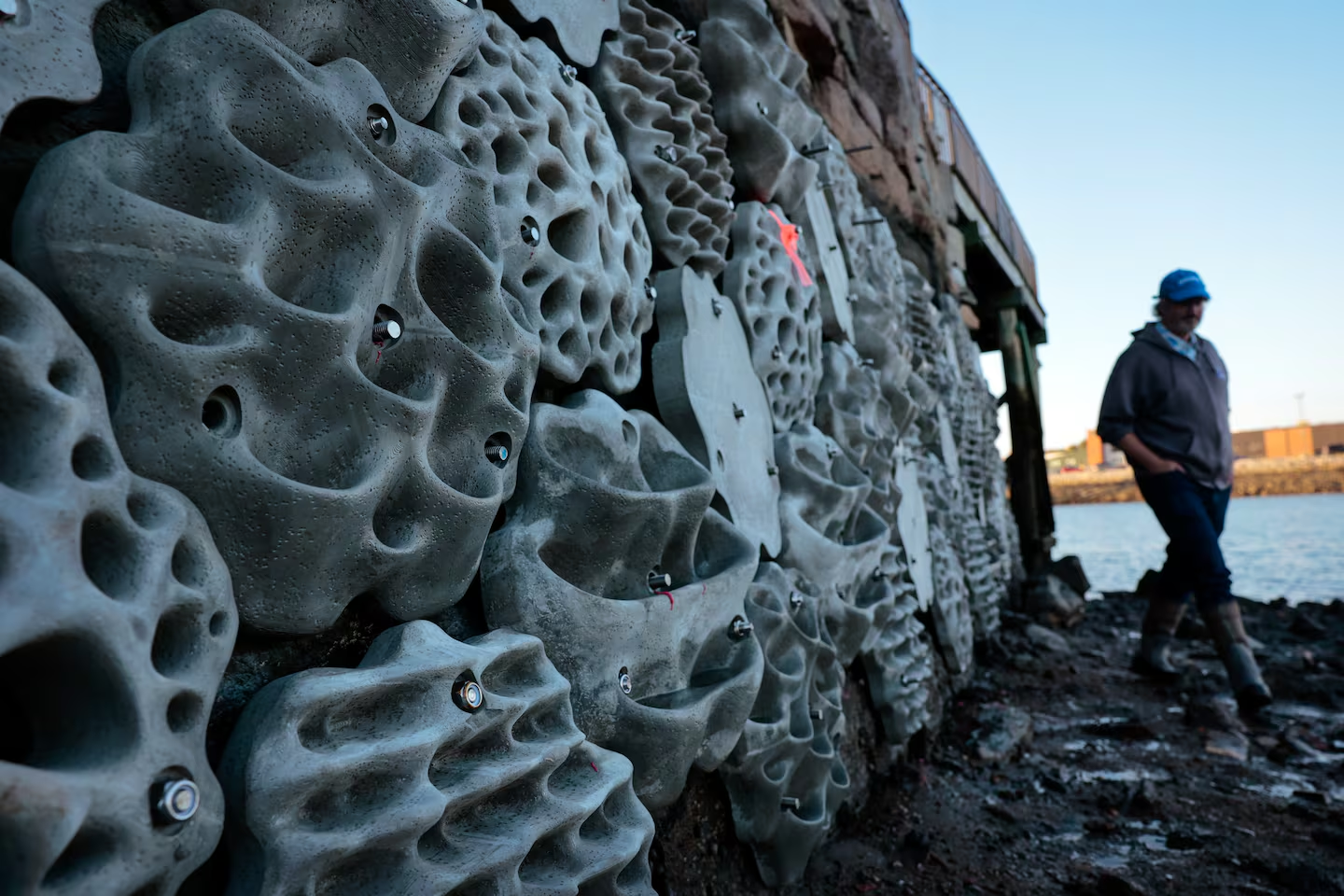
Marine Biologist Jarrett Byrnes toured the Condor Street Urban Wild park in East Boston.Craig F. Walker/Globe Staff
The new waterfront residences in East Boston already have tenants: a snail and two mussels that have snuggled into the crevices and pockets of an undulating concrete panel attached to a vertical sea wall of granite blocks.
“Our first pioneer!” proclaimed marine biologist Jarrett Byrnes, who is conducting an experiment in Boston to make the many sea walls here a friendlier habitat for marine organisms in the age of climate change and rising oceans.
While sea walls are expected to get bigger and more common to protect against flooding, modern walls made of poured concrete and even older ones of sheer granite block displace the natural “rocky intertidal” habitat that provides the shade, moisture, and hiding places that marine life need to thrive. In the 15 miles of Boston shoreline directly exposed to the ocean, about 7 miles have steep sea walls that are inhospitable to marine life, according to a state inventory of coastal infrastructure. Nationwide about half the the natural shoreline has been replaced by sea walls, breakwaters, and artificial barriers, according to the Australian Group Living Seawalls.
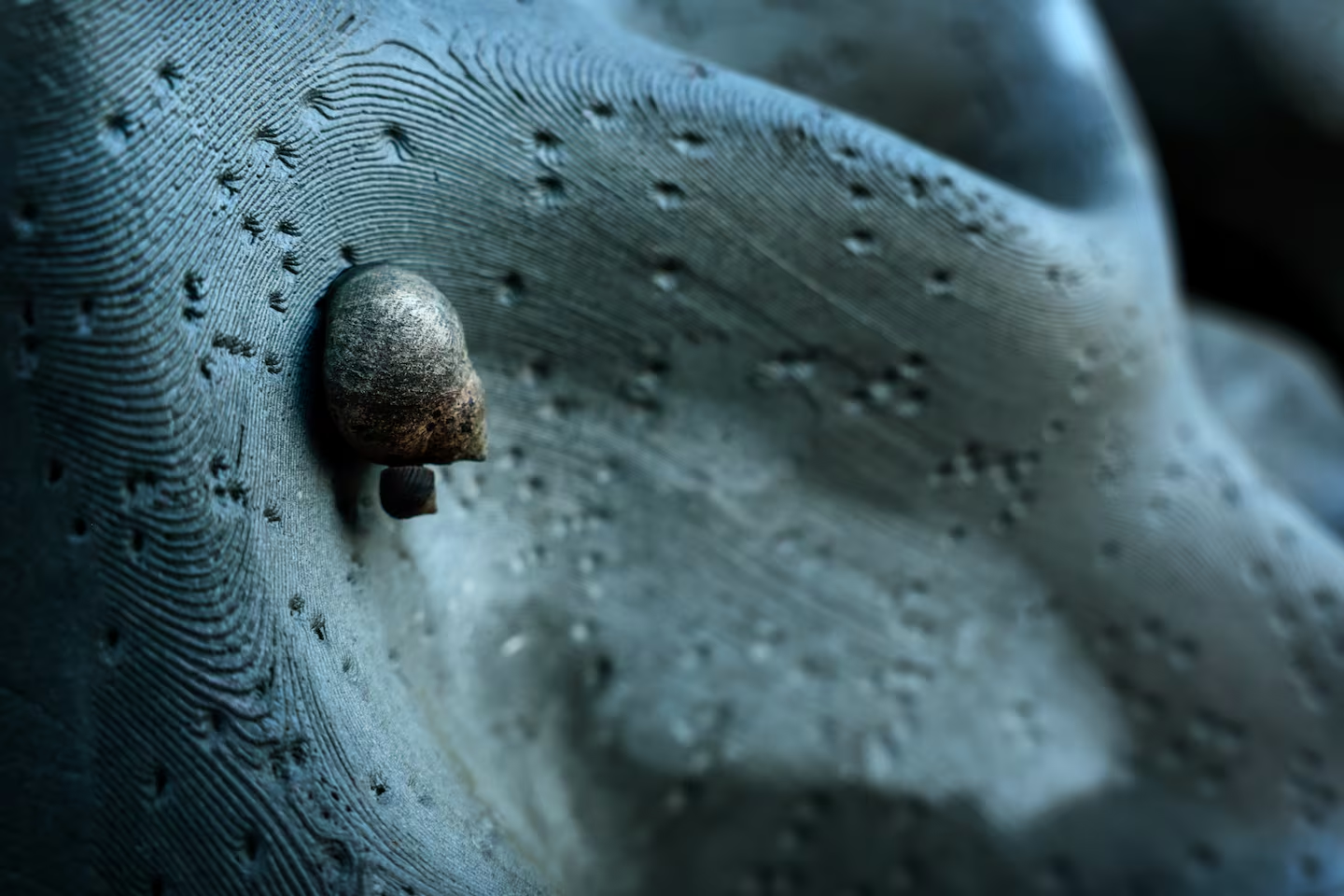
A pair of periwinkle snails attached to a Living Seawall panel at the Condor Street Urban Wild park in East Boston. Craig F. Walker/Globe Staff
In an attempt to stave off further habitat loss, scientists in Boston are experimenting with “Living Seawall” panels on three sea walls to help creatures return to sensitive and narrow tidal ecosystems. The two- by two-foot panels are arranged horizontally along the intertidal line of the sea walls, so that they are submerged at high tide and exposed at low.
Resembling pieces of a climbing wall in a gymnasium, the panel are vaguely rocklike and easy to grab onto. The hope is that algae, mussels, snails, barnacles, crabs, fish, and other marine life will be the ones soon clinging to the artificial habitat. (But not humans; there will be signs warning kids to stay away from the ongoing science experiment.)
Early indications are the panels are working. In the shade of a roughly 15-foot-high sea wall, a handful of snails and mussels had already moved into the new 500 square-foot surface area habitat, just one day after it was installed. Scientists expect to see many more residents by next summer.
“This is a really important project for Boston and for the region,” said Joe Christo, managing director of the Stone Living Lab, which spearheaded the project. If the Living Seawalls work, he hopes that the many other hardened and steep edges of the coast will be able to install similar eco-friendly walls.
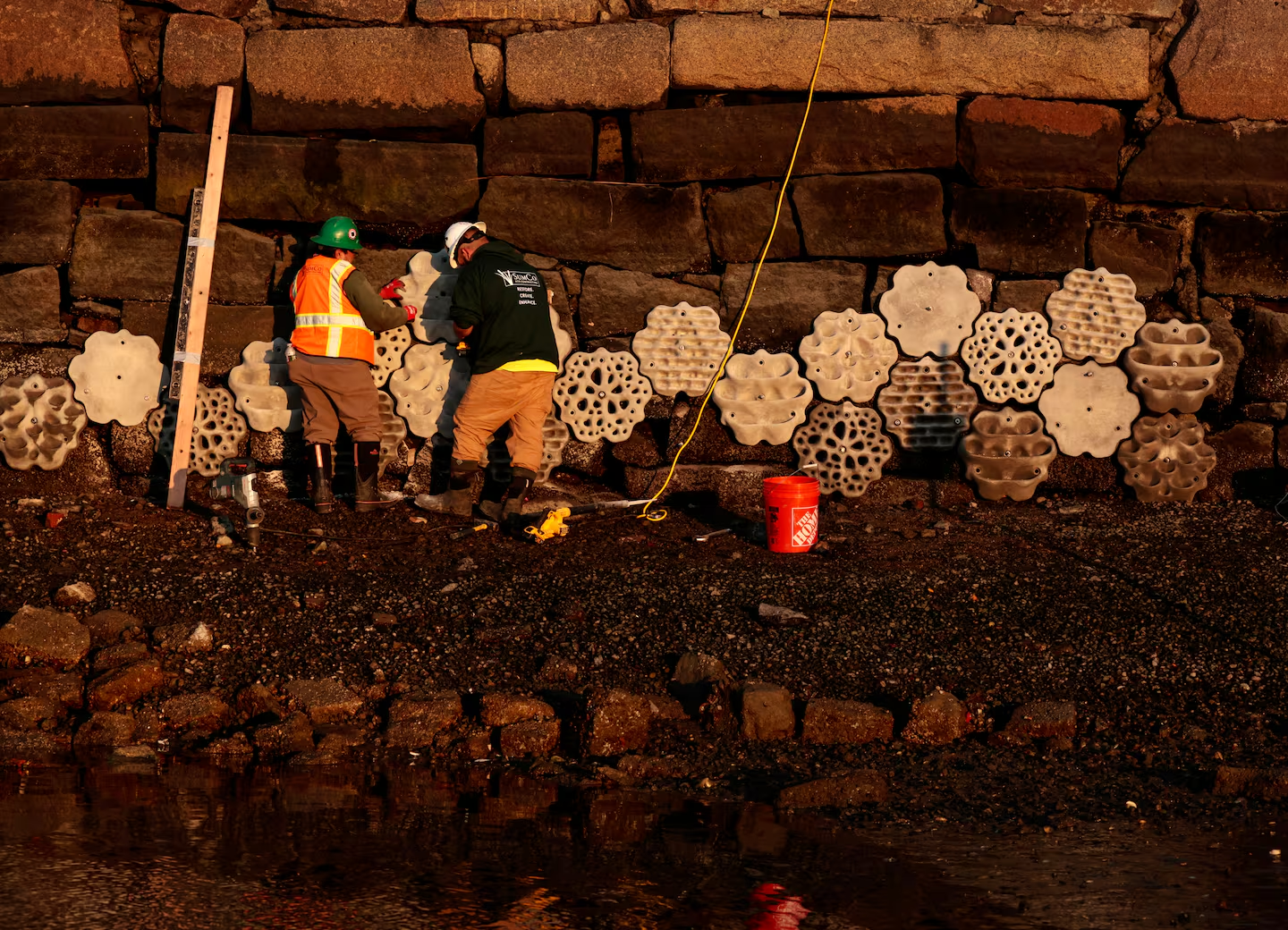
Hugo Urbina (left)and Jeremy Simon of SumCo Eco-Contracting worked on the installation of a Living Seawall at the Condor Street Urban Wild park in East Boston on Oct. 18.Craig F. Walker/Globe Staff
“It’s providing more habitat for organisms in the intertidal zone that are getting a smaller home as the sea level rises against a hardened edge,” Christo said.
Sea levels in Boston are already about 1 foot higher than in the 1920s, when modern record-keeping began. In dense urban areas where more natural solutions, such as expanded marshlands, aren’t possible, sea walls are here to stay, he added.
The three Boston sites include two on a sea wall at the Condor Street Urban Wild wall in East Boston and one on the sea wall at Fan Pier Park the in Seaport. The artificial panels were designed by the Living Seawall group of the Sydney Institute of Marine Science in Australia.
The project cost about $400,000, Christo said, including research. The Stone Living Lab, a Boston-based research group focused on adapting coastal communities to climate change, relied on philanthropic donations and the state of Massachusetts for funding.
The idea for the project was hatched almost two years ago, when Stone Living Lab connected with the Living Seawall group during the international Earthshot Prize award ceremony in Boston, a contest founded by Prince William and the Royal Foundation to help entrepreneurs with climate solutions scale their ideas. (Living Seawalls was an Earthshot Prize Finalist in 2021.)
The Condor Street Urban Wild park in East Boston was selected for the experiment in part for its ecologically distressed past. This area was once a blighted dumping ground, and Chelsea Creek is still a busy navigational channel for industry. After a restoration project in 2003, the land behind the sea wall was transformed into a grassy park.
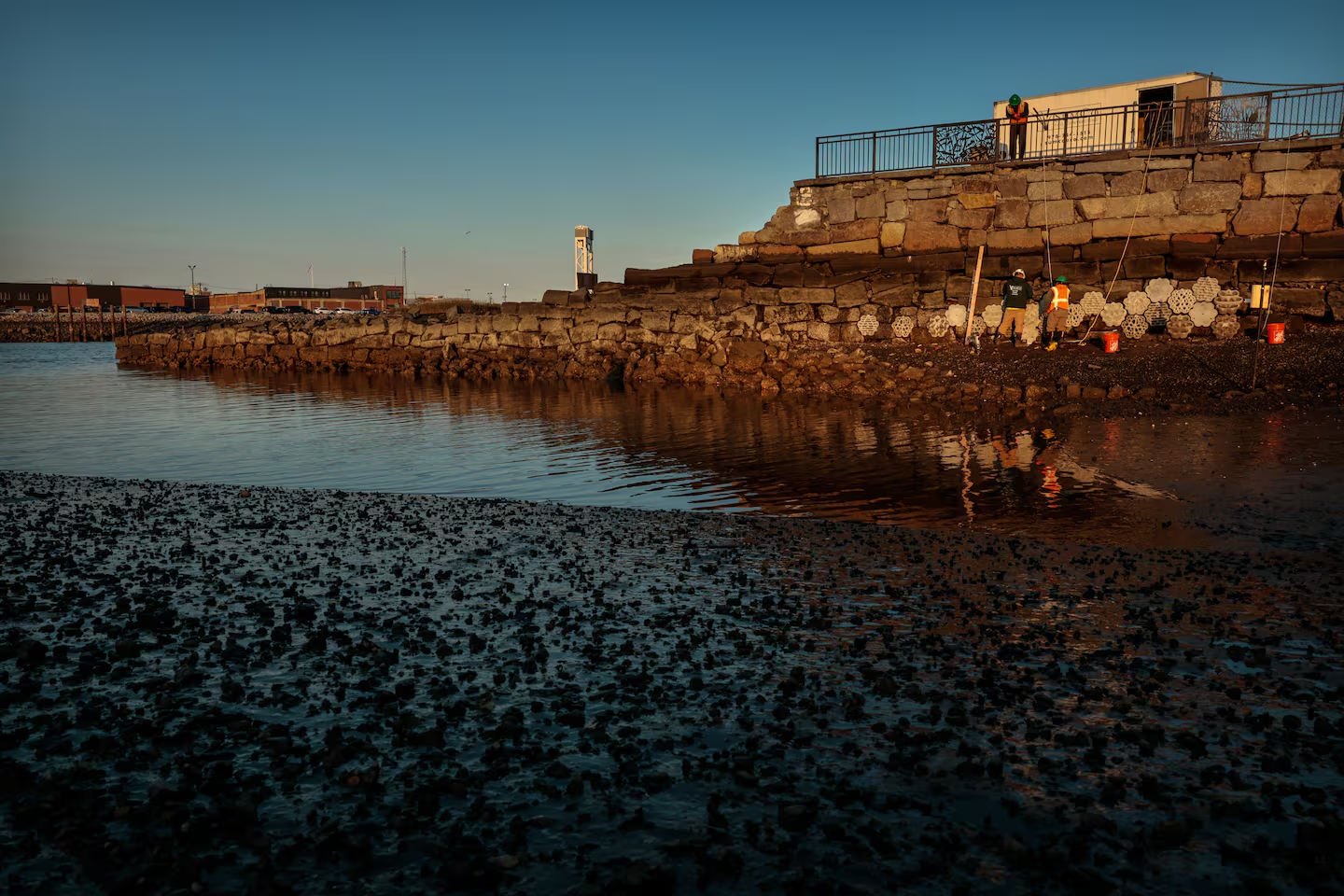
A team from SumCo Eco-Contracting worked on the installation of Living Seawall panels at the Condor Street Urban Wild park in East Boston.Craig F. Walker/Globe Staff
It’s easy to see how rising seas here have already stressed the ecosystem below the sea wall. After the restoration two decades ago, there was a small salt marsh growing below the park. Salt marshes provide habitat for marine life, act like sponges during flooding events, and mitigate climate change by absorbing and storing carbon dioxide. However, what’s mostly left now are barren mud flats, as rising seas eventually inundated the marsh.
Byrnes, an associate professor at UMass Boston who will study the project, wants to know whether bringing back marine species to an ecologically stressed area could also improve water quality and other environmental metrics, such as temperatures at the wall. He thinks the panels could change the game and possibly restore the whole ecology of a system.
He’ll also test which panel design will best mimic nature. Four designs are being tested against a control panel that is flat and smooth. Byrnes and students will monitor the number and type of species that return.
Researching a sea wall isn’t the first choice for the team at Stone Living Lab, who say they’d prefer more natural solutions to sea level rise such as protecting salt marshes or building parks.
“But there are places where nature-based approaches don’t have enough room,” Christo said. “This is a way of making gray infrastructure more green.”